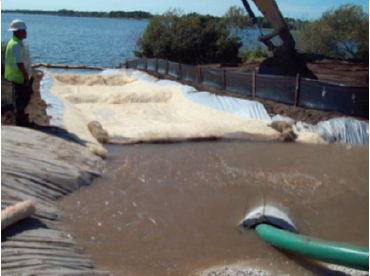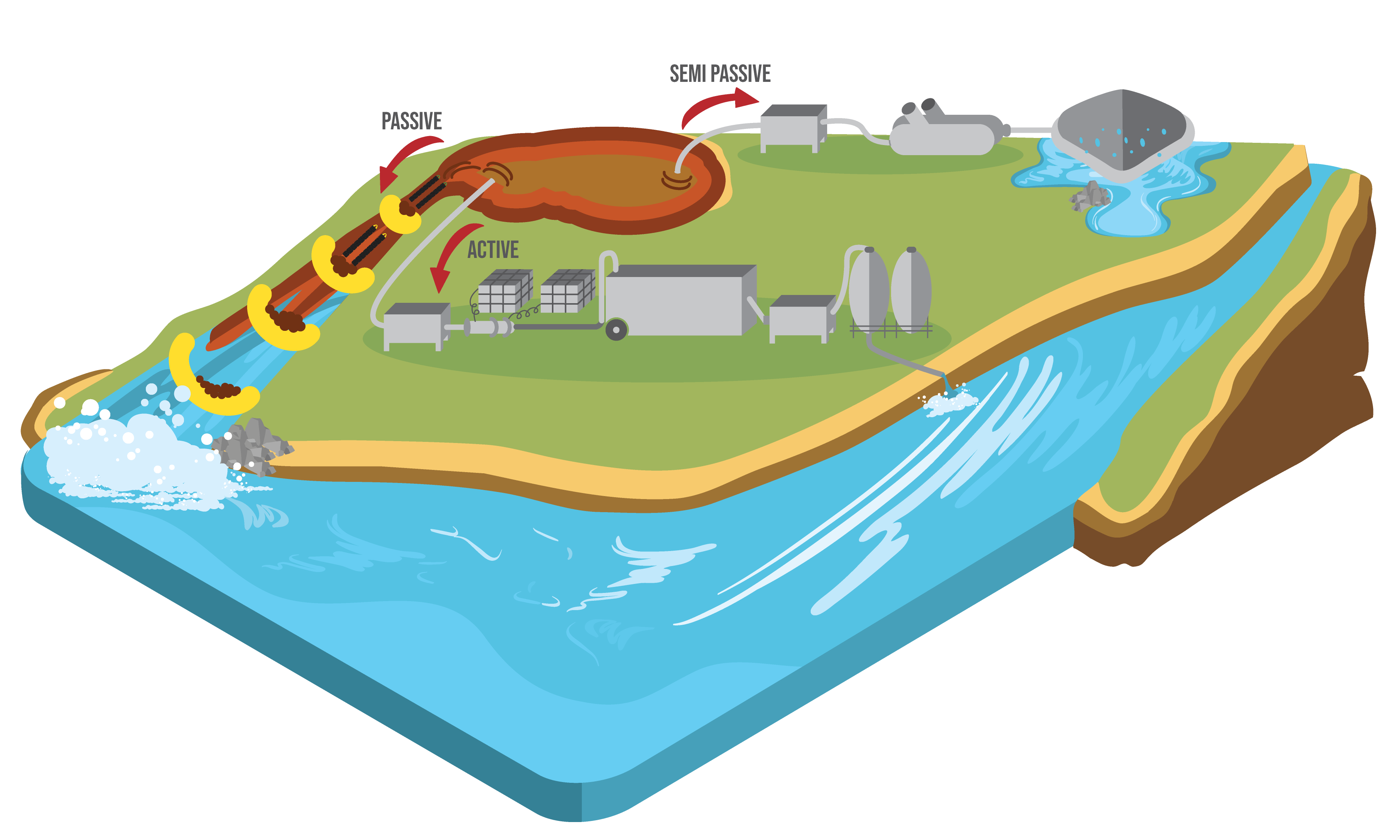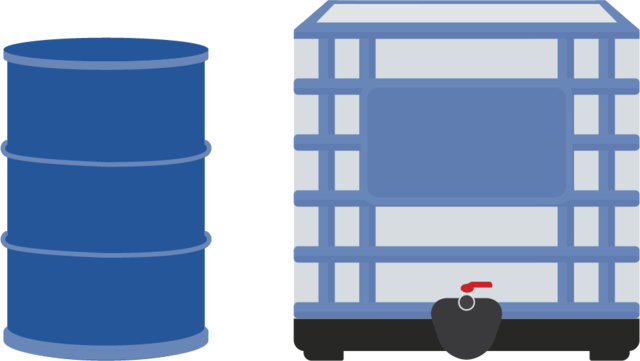Dual Polymer System
Some of the most stringent and environmentally sensitive regulatory agencies prefer HaloKlear® DPS over synthetic alternatives for water treatment, based on toxicity testing that demonstrates no harm to aquatic organisms at recommended dosages.
Trusted For Use in the Most Sensitive Ecosystems
The Dual Polymer System (DPS) uses a sequence of two biodegradeable, natural biopolymers that perform both coagulation and flocculation treatment reactions on a wide array of soil types and pH ranges. All of HaloKlear’s products exhibit exceptionally low toxicity, and the Dual Polymer System (DPS) has been proven to have zero toxicity.*
In contrast to other products on the market, the HaloKlear DPS is extremely flexible with a successful track record. The chemistry comes as a liquid or a solid, for use in passive or active treatment systems. You would introduce the two parts in separate locations, first the coagulant (LBP-2101 or DBP-2100) then the flocculant (LiquiFloc 1% or GelFloc).
*Third-party toxicity testing concluded that no fish were killed by the Dual Polymer System when both parts were used in combination and following Best Management Practices.


Effective and Versatile Treatment
The Dual Polymer System has been trusted across North America in reducing turbidity and removing unwanted particulate contaminants in the most sensitive ecosystems and regulatory environments. Since DPS is acrylamide-free and 100% biodegradable through enzymatic activity, it ensures there are no bio-accumulation concerns after treatment.
Treatment systems using DPS are adaptable and highly versatile to achieve water quality goals on projects with varying site conditions, soil types, and seasons. Additionally, the Dual Polymer System can be utilized in passive, semi-passive, and active treatment systems. DPS performs best in waters that have a pH of 6 – 9 and TSS up to 10,000 mg/L.
Additionally, DPS creates floc solids with a lower percentage of water entrained, which creates a stable and strong floc. A high-quality floc allows treatment systems to run more efficiently with benefits both upstream and downstream:
- Fast Settling Times
- Easy filtration and backwashing
- Reduce hauling and disposal costs
- Remove a variety of solid- including fine sediment, heavy metals, and PCBs.
An Environmentally safe Solution For Every Industry
Treatment systems using DPS are adaptable and highly versatile to achieve water quality goals on projects with varying site conditions, soil types, and seasons
Industrial Stormwater Treatment
Capture dusts, particulate metals, and trace oils.
Construction Site Water Treatment
Remove TSS and ntu from site stormwater, dewatering, and wheel wash.
Environmental Remediation
Capture particles like metals, asbestos, and PCBs.
Biosolids Management
Enhance dewatering for dredging and biosolids processing.
LBP-2101
LBP-2101 is the liquid version of the biopolymer coagulant. LBP-2101 is integrated into treatment systems through a liquid chemical dosing system and is most often injected upstream of LiquiFloc 1%.
Deployment methods:
- Liquid dosing systems
- Active and semi-passive treatment systems
Available in 55 gallon drums or 275 gallon totes


DBP-2100
DBP-2100 is the dry powder version of the biopolymer coagulant. This product is integrated into treatment systems as a sock and is most often placed upstream of a GelFloc sock. The DBP-2100 sock is designed the same as the GelFloc sock. The geotextile tube is filled with DBP-2100 powder, designed to dose the coagulant by dissolving the powder into water as it flows over the sock.
DBP-2100 socks perform the same as GelFloc socks, they will dose approximately 100ppm at 150gpm flow. If a higher dose is required, or the system flow is higher, you can add additional socks in series. Each sock will treat approximately 100,000 gallons of water, and is highly variable based on flow rate, water temp, and turbulence of the water flowing over the sock.
Deployment methods:
- Dry Sock Systems
- Passive and semi-Passive treatment systems
Available in packs of 4 socks per 5 gallon pail.


